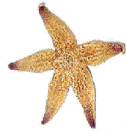Chemistry, Department of: Faculty Series

Hideaki Moriyama Publications
Document Type
Article
Date of this Version
October 2006
Abstract
In the fertilization process of sea stars, sperm is activated to go through the acrosome reaction before cell fusion. We focused on induction of the acrosome reaction as a key process in fertilization. Six species of sea stars were used in this study: Asterias amurensis, Asterias rubens, Asterias forbesi, Aphelasterias japonica, Distolasterias nipon, and Asterina pectinifera. Acrosome reaction assays indicate that the acrosome reaction can be induced across species within Asteriinae subfamily. However, cross-fertilization assays indicate that sea stars have species specificity in fertilization. Therefore, steps after the acrosome reaction are responsible for the species specificity. To explain acrosome reaction subfamily specificity at the molecular level, the sugar components of egg jelly were examined and analyzed by principal component analysis. A. amurensis and A. forbesi belong to the same induction group of the acrosome reaction. D. nipon and An. pectinifera are in a unique group. Enzyme-linked immunosorbent assays indicate that Asteriinae subfamily share a common glycan structure, the Fragment 1 of Acrosome Reaction-Inducing Substance from A. amurensis. Fragment 1 plays an important role in the subfamily specificity of acrosome reaction induction. In addition, A. amurensis sperm activating peptide was recognized by sperm from the same superorder. These results demonstrate that the specificity of acrosome reaction induction is present at the subfamily level in sea stars.
Includes Supplementary Data not published in the printed journal edition.


Comments
Published in Developmental Biology 298:2 (October 15, 2006), pp. 597–604. doi:10.1016/j.ydbio.2006.07.009 Copyright © 2006 Elsevier Inc. Used by permission. http://www.sciencedirect.com/science/journal/00121606